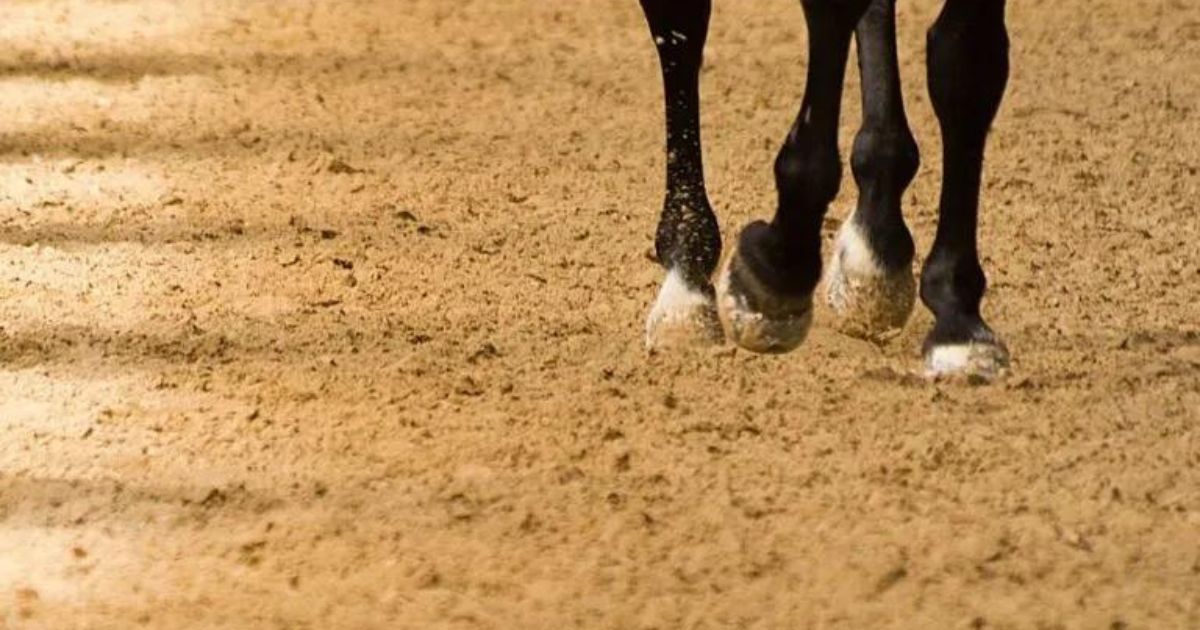Menu

It's not always easy to get your horse to stay in walk – especially a proper one. It trots off while you earnestly try to tell it that neither trot nor canter is on the agenda right now. So what do you do? We've compiled the best advice from our own editors, aimed at dressage riders, trail riders, and show jumpers alike.
Most dressage riders probably know the problem: after a canter exercise is over and the next one is to be done in walk, it's much easier said than done to get the horse to relax, step through properly, and stay in walk.
Trail riders have certainly experienced sitting on a horse that clearly remembers where in the forest it last had a big gallop. Often as a rider, you can do little more than accept some trotting until you reach the spot where the horse suddenly remembers "this is where the gallop ended last time" – unless, of course, you as a rider choose to give in and let your horse run at full speed.
The same applies to a show jumper, who rarely experiences a horse entering the arena without starting to prance. The horse may tense up more than necessary, which in the worst case can affect the round on the course.
Whether you ride dressage, show jumping, or love a ride in the countryside, it can be rewarding to teach your horse when walk actually means it should stay in walk. It's mostly about teaching it to understand that when it should walk, it doesn't necessarily mean a trot or canter is just around the corner.
When the horse is prancing and maybe on the verge of moving into a trot, it might be tempting to completely remove your legs from its sides. However, this only makes the challenge greater. If you lose contact with the horse with your legs, you'll give it free rein to run at its own pace. The leg aid means – as many surely already know – not just "forward", but can also mean "stay with me". So use them to maintain contact with the horse, so it knows it should stay with you.
As a rider, you should exhibit the exact feeling you want to instill in the horse. When the horse is tense, it's all about staying as relaxed as possible, even if you may feel insecure, nervous, or irritated by the horse's reaction. One way to show relaxation is by following its movements. When you do this, you can use the rhythm in your seat to try to stretch the horse's steps, gradually making them longer. You shouldn't drive hard forward, but simply let your hips follow the steps and gently – and most importantly, completely relaxed – try to break the horse's rhythm. This way, your relaxation will spread to the horse, and it will be better able to stay in walk.
If you're getting ready to move your horse into a trot or canter, it's important to gather the reins as gently as possible. Most horses know that when the rider takes up the rein, it means something is about to happen. Therefore, start taking up the rein a bit more firmly in good time and do it inch by inch. A good exercise can be to gather the rein and let it go many times while in walk. This way, the horse learns that shortening the rein doesn't necessarily mean it should move forward, but stay in walk.
Unless you're riding a dressage program in front of a judge, it's always a good idea to calm the horse with your voice and with a pat. Also remember to praise it when it reacts as you wish – but do it gently, so the calm is maintained. Contact with your horse can make it much more calm and secure, and can divert its attention from when you might give it a signal to move forward.
The last thing you can do to teach your horse to stay in walk is to be mindful of where you place your transitions. Horses are incredibly smart, and they easily remember where they often get to increase their pace. Therefore, it's about being cunning and outsmarting them. Some dressage riders choose to ride their program in reverse every other time they practice it, while others switch around the gaits or deliberately place the transitions in new places. For trail riders, it can be a huge advantage to promise oneself never to trot or canter in the same place twice in a row. Show jumpers might try not always to move into a canter directly from walk, but first move the horse into a trot. Then the horse can learn that there's a stage between "go" and "full speed ahead."
If you're a competition rider, the first thing you can do is to thoroughly practice walking at home. That means at home in familiar surroundings on the riding arena, in the riding house, or on the trails where you usually ride. Only when the walk is perfected at home can you expect it might also succeed in unfamiliar surroundings.
We hope you can use these tips. Good luck teaching your horse to stay in walk."